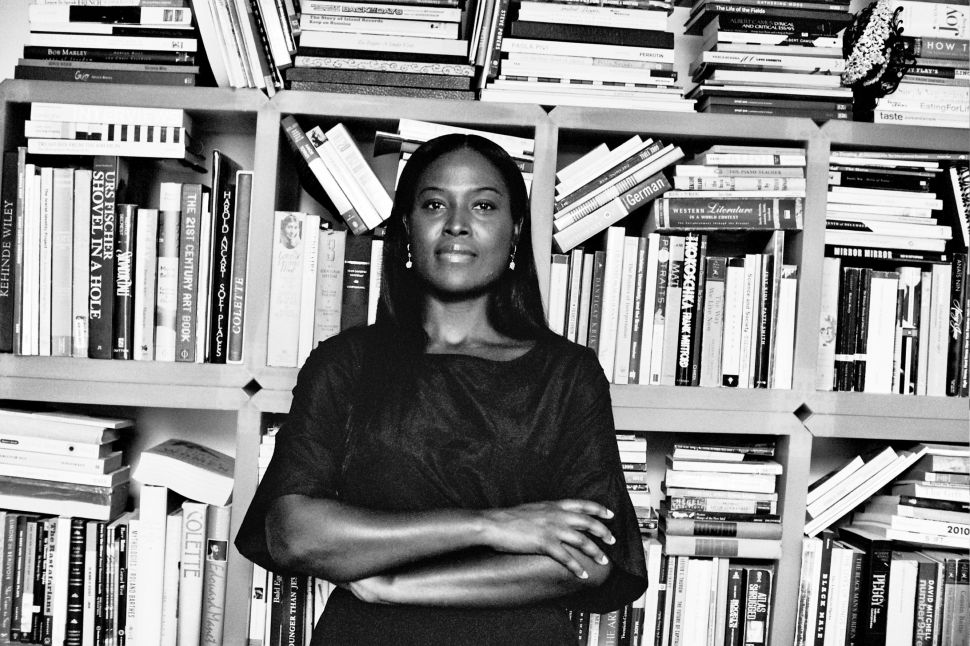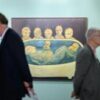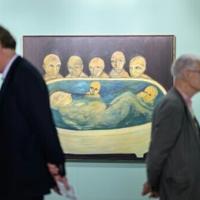
Many publications, including this one, have told the story of gallerist and curator Nicola Vassell’s career arc, but here’s a tl;dr version: She has built a reputation for championing underrepresented voices, particularly those of African American and African diaspora artists, and she has been widely recognized for being the first Black woman to open a Chelsea gallery. Prior to that, she held directorships at blue-chip galleries, including Deitch Projects and Pace; launched the art consultancy and curatorial agency Concept NV; and produced six editions of the No Commission art fair with the hip-hop producer (and avid art collector) Swizz Beatz. She curated Beatz and Alicia Keys’s Dean Collection and the artwork that appeared in Season 2 of the hit TV show Empire.
Vassell’s talents are clearly manifold, though her special skill may be identifying opportunity ahead of the rest of us. When, as now Wall Street Journal photo editor Danielle Scruggs wrote for Observer in 2019, the gallerist made a splash with the exhibition “Black Eye” in Tribeca, she brought together the work of Kehinde Wiley, Steve McQueen, Rashaad Newsome, Hank Willis Thomas, Wangechi Mutu, LaToya Ruby Frazier, Deana Lawson, Xaviera Simmons and Rashid Johnson. A group of artists, Scruggs pointed out, “who have shown together a lot since, but not so much before.” Cultured called her the Art Whisperer.

Originally from Jamaica, Vassell opened her eponymous Chelsea space, Nicola Vassell Gallery, in 2021 with an inaugural exhibition featuring Ming Smith. The gallery quickly garnered attention for its focus on socially relevant themes and its representation of cutting-edge talent. Now, she’s preparing to open “Prince of the Far Rainbow” on November 2, an exhibition of new abstract paintings and works on paper by artist Alteronce Gumby. We caught up with Vassell to ask her a few questions about how she approaches working with artists, what it’s like to be a trailblazer and her thoughts on the current state of the art market.
What do you look for in the artists you work with? Is there a personal element to your approach or are you market focused?
I look for a combination of things in artists—quality of ideas and artistic outcomes, work ethic and discipline, even if, for them, process both frustrates and flourishes. It helps if an artist understands that a practice increasingly requires business acumen or welcomes its learning curve. Character is another key component. Decision-making is born there, and temperament generates roadmaps for the future.
Your gallery has gained a reputation for promoting Black artists and voices from the African diaspora. How do you see the role of these artists evolving in the global art market?
Great artists have the ability to use personal or communal narratives to express universality. That way, everyone has access to an idea. I see the gallery’s artists continuing to complicate, even contradict, historical and contemporary viewpoints by virtue of their being and ideas. They succeed despite and because of who they are. The work and the individual role-play, ideally in surprising ways. The market responds when multiple aims rooted in a clear vision are successful.




Speaking frankly, do you feel pressure there? Researching you, I encountered a lot of ‘first Black gallerist in Chelsea’ headlines.
There are expectations I have of myself and those that resonate from the viewing public. I think about both and understand that specific headlines are a consequence of urgent moments. It might have been less captivating to lead with my twenty years in the business. Still, quality of work stands as cardinal. You can make all your points there. Everything else matters less.
SEE ALSO: Sobering, ‘Hard Graft’ Unpacks Issues of Exploitation and Well-Being in Work
What are the most significant shifts you’ve seen in the art market, particularly in the years after you opened NVG?
The art market is grappling with over-stimulation and saturation after years of growth while the art community searches for existential stability and fresh theoretical paradigms. The overlap provokes a shifting calculus around the perception of value, which invariably thins the field. Concepts, artworks, buying and selling are all under pressure and assessment, affecting the infrastructure on which they are built. A type of consolidation is emerging that underscores both collaboration and new generational perspectives. Also, the cost of getting an artwork into the world cannot be overlooked. It has increased exponentially and implicates every corner of the art business.
What future projects or exhibitions at NVG are you most excited about?
I’m excited about our Alteronce Gumby exhibition in November. Alteronce is a brilliant abstract painter who experiments with how we perceive color and uses materials like shattered glass and semi-precious gemstones. We’re looking forward to Art Basel Miami and our January exhibition with gifted new artist Na Kim, who makes stirring portraits of a character in constant transformation.
This post was originally published on this site be sure to check out more of their content





